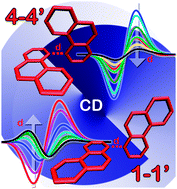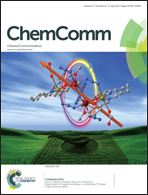The role of magnetic–electric coupling in exciton-coupled ECD spectra: the case of bis-phenanthrenes†‡
Abstract
Apparent exceptions to the exciton chirality method may arise for chromophores undergoing transitions which are both electric- and magnetic-dipole allowed, for example bis-phenanthrenes. We present a computational approach to calculate exciton-coupled CD spectra based on a quantum-mechanical description of the excitonic parameters, which also includes the solvent effects.


 Please wait while we load your content...
Please wait while we load your content...